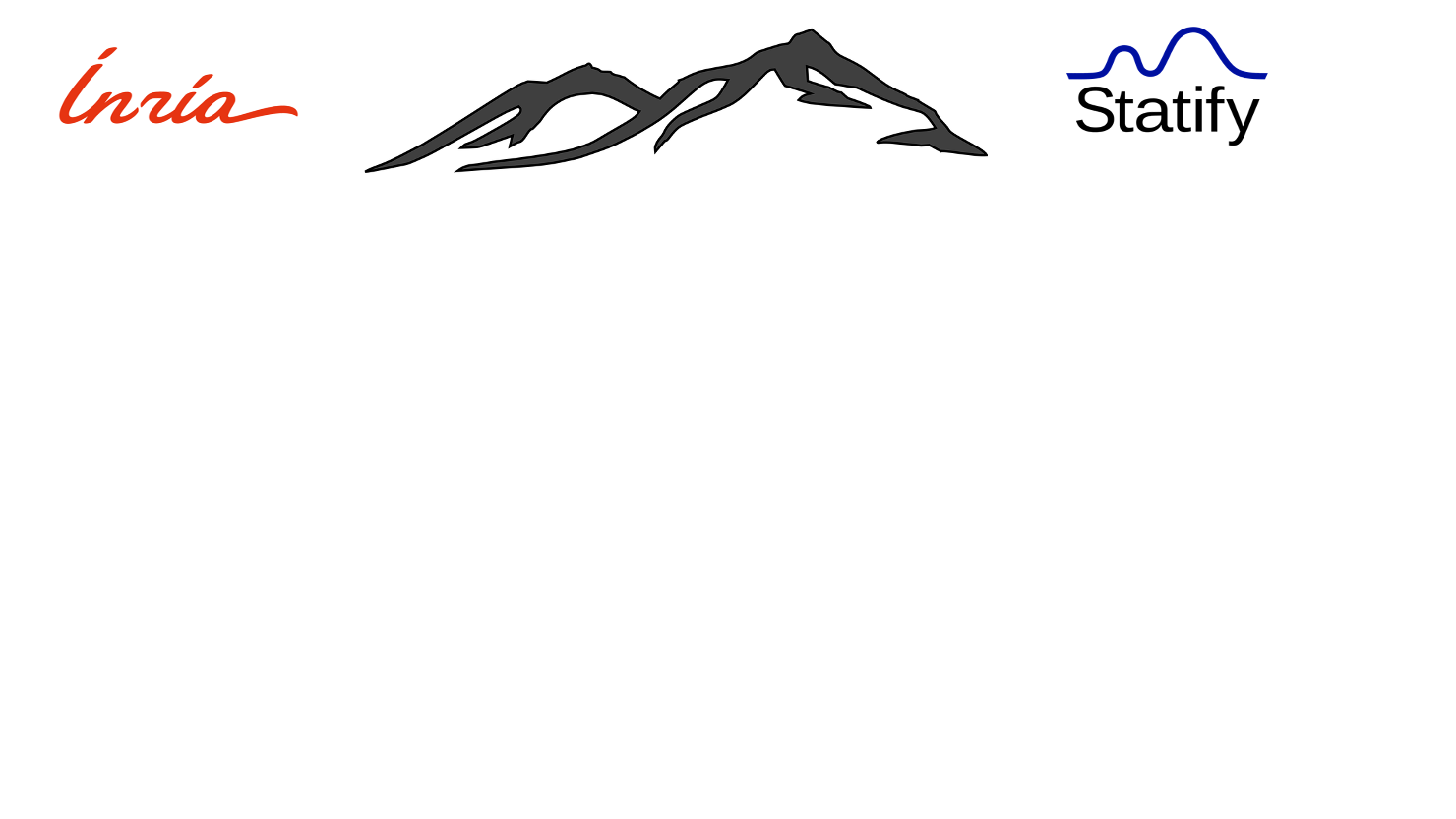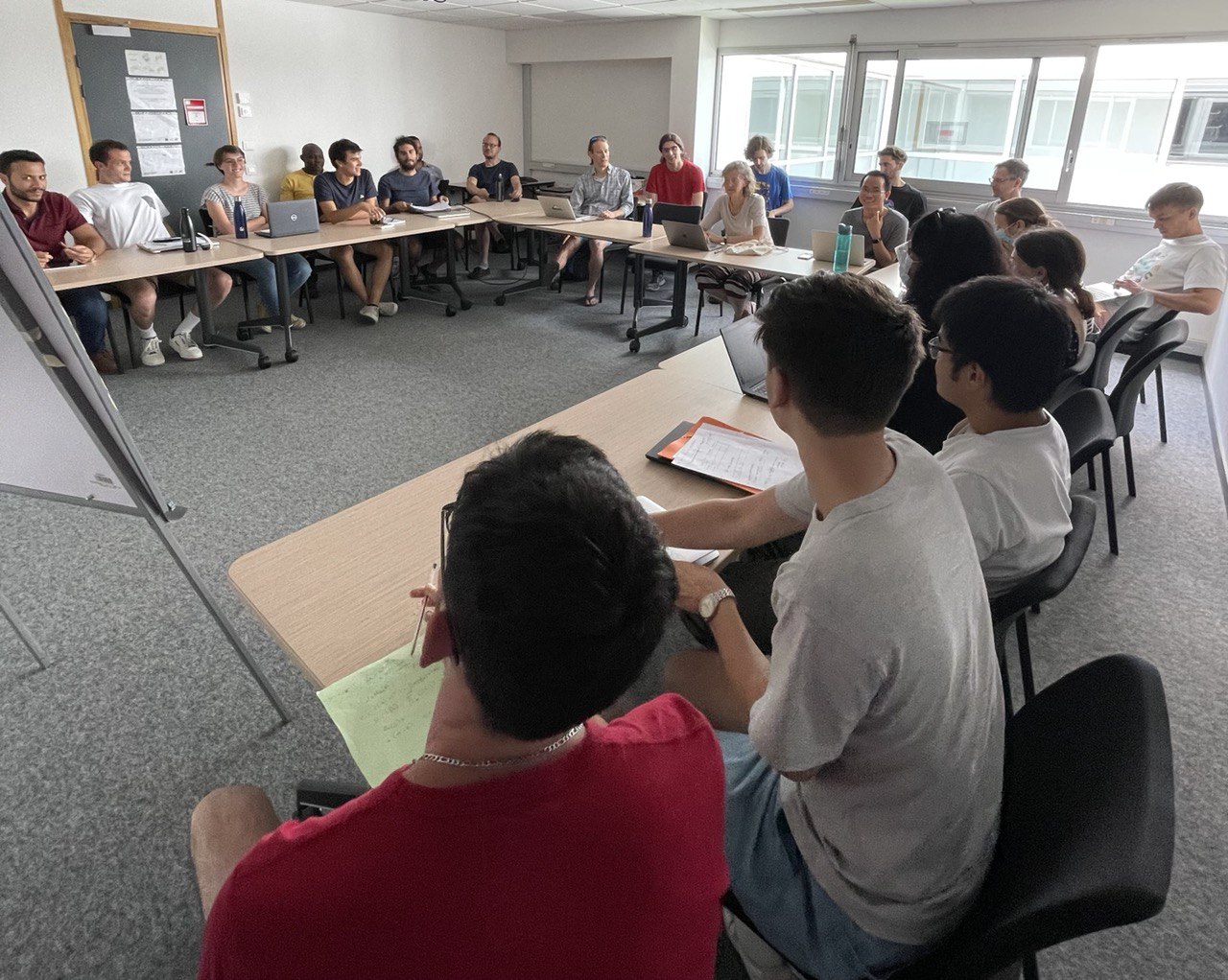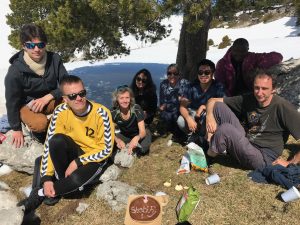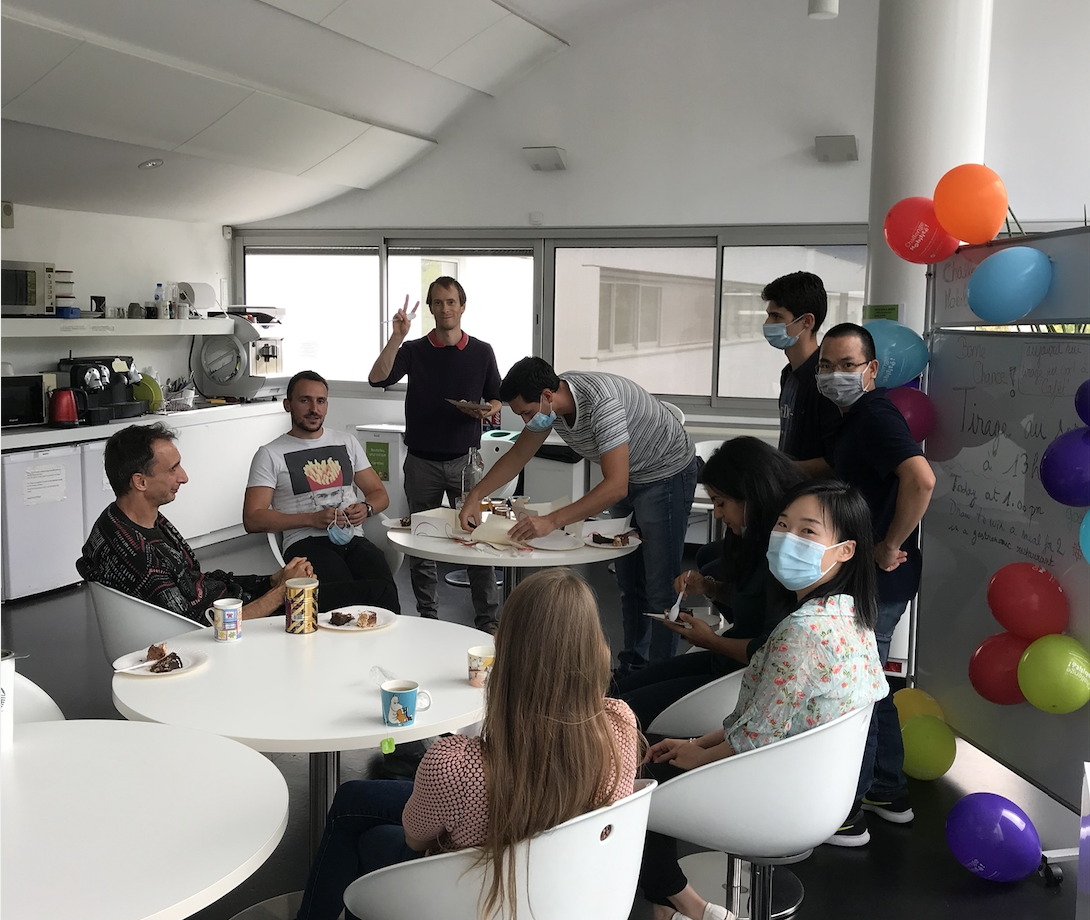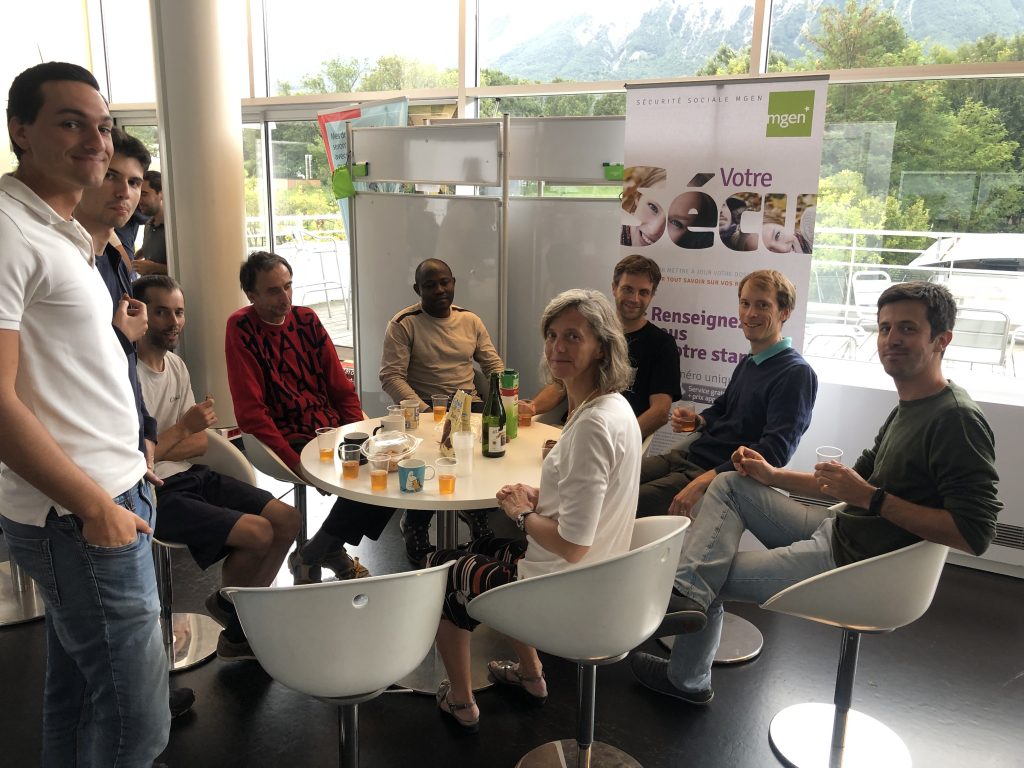 Past projects
Past projects
 Ongoing projects involving Mistis
Ongoing projects involving Mistis
Associate teams
– WOMBAT: (2023-26).
WOMBAT is a project-team started in March 2023 with French and Australian partners. T
– SIMERG2E: Statistical Inference for the Management of Extreme Risks and Global Epidemiology (2015-21).
SIMERG2E is a LIRIMA project-team started in January 2015. The team federates researchers from LERSTAD (Laboratoire d’Etudes et de Recherches en Statistiques et Développement, Université Gaston Berger, Sénégal), on the one hand, and Mistis (Inria Grenoble Rhône-Alpes) on the other hand. This project consolidates the existing collaborations between these two Laboratories. The team also involves statisticians from EQUIPPE laboratory (Economie QUantitative Intégration Politiques Publiques Econométrie, Université de Lille) and associated members of Modal (Inria Lille Nord-Europe) as well as an epidemiologist from IRD (Institut de Recherche pour le Développement, Unité de Recherche sur les Maladies Infectieuses et Tropicales Emergentes) at Dakar. The following two research themes are developed : (1) Spatial extremes with application to management of extreme risks ; (2) Classification with application to global epidemiology.
– LANDER: Latent Analysis, Adversarial Networks, and DimEnsionality Reduction (2019-22).
LANDER is a project-team started in January 2019 with French and Australian partners. The team federates researchers from Queensland University of Technology and Univ. of Queensland, Brisbane; La Trobe Univ. and Swinburne Univ., Melbourne; Univ. of Adelaide; and Univ. of Caen, France. The collaboration is based on three main points, in statistics, machine learning and applications: 1) clustering and classification (mixture models), 2) regression and dimensionality reduction (mixture of regression models and non parametric techniques) and 3) high impact applications (neuroimaging, satellite and radar imaging, and planetology).
European Projects
– European H2020 RESSTORE (2015-2018)
Pixyl is involved in this multi-center Stroke European H2020 project including 20 partners, led by Dr. Olivier Detante (Grenoble CHU). RESSTORE stands for REgenerative Stem cell therapy for STroke in Europe. It is part of Clinical research on regenerative medicine program. It will involve a phase 2 trial with 300 patients imaged at 4 time points over a 3 year timeframe. Pixyl will provide automatic stroke lesion segmentations.
-VHIA ERC project (2015-19)
MISTIS is involved in R. Horaud’s ERC advanced Grant entitled Vision and Hearing In Action. VHIA studies the fundamentals of audio-visual perception for human-robot interaction.
Competitiveness Clusters (Poles de competitivite) Projects
– FUI VISION 4.0 (in short VI4.2): Industry 4.0, AI and the PCB industry (2016-2019). Vision 4.0 (in short Vi4.2) is one of the 8 projects labeled by Minalogic, the digital technology competitiveness cluster in Auvergne-Rhône-Alpes, that has been selected for the Industry 4.0 topic in 2016, as part of the 22nd call for projects of the FUI-Régions. This 3 year project is coordinated by VI Technology, a world leader in Automated Optical Inspection (AOI) of a broad range of electronic components. The other partners are the G-Scop Laboratory in Grenoble, ACTIA company based in Toulouse and Mistis, for a total budget of 3,4 M€.
Today, in the printed circuits boards (PCB) assembly industry, the assembly of electronic cards is a succession of ultra automated steps. Manufacturers, in constant quest for productivity, face sensitive and complex adjustments to reach ever higher levels of quality. Project VI4.2 proposes to build an innovative software solution to facilitate these adjustments, from images and measures obtained in automatic optical inspection (AOI). The idea is – from a centralized station for all the assembly line devices – to analyze and model the defects finely, to adjust each automatic machine, and to configure the interconnection logic between them to improve the quality. Transmitted information is essentially of statistical nature and the role of the Mistis team is to identify which statistical methods might be useful to exploit at best the large amount of data registered by AOI machines. Preliminary experiments and results on the Solder Paste Inspection (SPI) step, at the beginning of the assembly line, helped determining candidate variables and measurements to identify future defects and to discriminate between them. More generally, the idea is to analyze two databases at both ends (SPI and Component Inspection) of the assembly process so as to improve our understanding of interactions in the assembly process, find out correlations between defects and physical measures and generate accordingly proactive alarms so as to detect as early as possible departures from normality.
IDEX Projects
Mistis is involved in three transdiciplinary projects from the Grenoble Idex, NeuroCoG, Data@UGA and Risk@UGA.
- NeuroCoG, 2017- 202: The NeuroCog project aims at understanding the biological, neurophysiological and functional bases of behavioral and cognitive processes in normal and pathological conditions, from cells to networks and from individual to social cognition. No decisive progress can be achieved in this area without an aspiring interdisciplinary approach. The interdisciplinary ambition of NeuroCoG is particularly strong, bringing together the best scientists, engineers and clinicians at the crossroads of experimental and life sciences, human and social sciences and information and communication sciences, to answer major questions on the workings of the brain and of cognition. One of the work package entitled InnobioPark is dedicated to Parkinson’s Disease. The PhD thesis of Veronica Munoz Ramirez is one of the three PhDs in this work package.
- Data@UGA, 2017-2020: The Grenoble Alpes Data Institute aims at undertaking groundbreaking interdisciplinary research focusing on how data change science and society. It combines three fields of data-related research in a unique way: data science applied to spatial and environmental sciences, biology, and health sciences; data-driven research as a major tool in Social Sciences and Humanities; and studies about data governance, security and the protection of data and privacy. F. Forbes is co-head of one of the 5 workpackage, WP2 Data Science for life sciences.
In addition, two 2-years multi-disciplinary projects were granted in November 2017 to Mistis in collaboration respectively with Inria Team Necs and Gipsa-lab (DATASAFE project: understanding Data Accidents for TrAffic SAFEty) and with IPAG and Univ. Paris Sud Orsay (Regression techniques for Massive Mars hyperspectral image analysis from physical model inversion). Also a funding of 8 keuros was awarded to the team from the IRS (Initiatives de Recherche Strategique) call for a research project dedicated to extreme and Bayesian statistics.
- Risk@UGA, 2018- 2021: The main objective of the Risk@UGA project is to provide some innovative tools both for the management of risk and crises in areas that are made vulnerable because of strong interdependencies between human, natural or technological hazards, in synergy with the conclusions of Sendai conference. The project federates a hundred researchers from Human and Social Sciences, Information & System Sciences, Geosciences and Engineering Sciences, already strongly involved in the problems of risk assessment and management, in particular natural risks.
Persyval Labex project
– Persyvact and Persyvact2 (2015-2019)
The Persyvact2 action is a follow-up of the Persyvact exploratory labex project. Persyvact2 like Persyvact consists of about 20 researchers from different laboratories (Gipsa-lab, LJK and TIMC-IMAG) and different fields related to data science. The PhD theses of A. Chiancone and K. Ashurbekova were funded by this project.
– Oculo Nimbus (2015-2019)
MISTIS was also been involved in the 3-year project-team Oculo Nimbus with other local laboratories (LJK, Gipsa-Lab and LPNC). The goal of this research project was to develop tools for analyzing eye-movement data. The PhD thesis of B. Olivier was funded by this project.
DGA rapid Project
– WIFUZ: Wireless multi sensor Fusion, 2015-17.
This 2 year project is supported by DGA and led by the ACOEM company and involves another company, the HIKOB startup. The objective is to develop a prototype for surveillance and monitoring that is able to combine multi sensor data coming from acoustic sensors (microphones or antennas) and optical sensors (infrared cameras) and to distribute the processing to multiple algorithmic blocs.
CNRS Defi Imag’IN project
– MultiPlanNet (2015-2017)
This is a 2-year project to build a network for the analysis and fusion of multimodal data from planetology. There are 8 partners: IRCCYN Nantes, GIPSA-lab Grenoble, IPAG, Grenoble, CEA Saclay, UPS Toulouse, LGL Lyon1, GEOPS University Orsay. A two day workshop was organized in November 2017 in Grenoble, on the analysis of multimodal data for planets observation and exploration.
CNRS Defi Mastodons
–CloHe (2015-2017)
This is a 2-year project entitled “Classification de Donnees Heterogenes avec valeurs manquantes appliquee au Traitement des Donnees Satellitaires en ecologie et Cartographie du Paysage” [132], the
other partners being members of MODAL (Inria Lille Nord-Europe) or ENSAT-Toulouse.
CNRS TelluS-Insmi project
This is a 1-year project entitled “unsupervised classification in high dimension”, with IPAG and Univ. Paris-Descartes.
GDR Madics
Apprentissage, opTimisation `a Large-´echelle et cAlcul diStribu´e (ATLAS). MISTIS is participating to this action supported by the GDR in 2016.
Industrial contracts
- VALEO (2017): a study has been carried out with Valeo to assess the relevance of extreme-value theory in the calibration of sensors for autonomous cars.
- PIXYL (2017): Mistis is involved in a collaboration with Pixyl for the valorization of techniques for brain MRI segmentation.
- CIFRE PhD with SCHNEIDER ELECTRIC (2015-2018):
The goal of T. Rahier’s PhD is to develop specific data mining techniques able to merge and to take advantage of both structured and unstructured (meta)data collected by a wide variety of Schneider Electric sensors to improve the quality of insights that can be produced. - EDF (2015-2018): A collaboration has been started with EDF for the PhD of Clement Albert. The goal is to investigate sensitivity analysis and extrapolation limits in extreme-value theory with application to extreme weather events.



